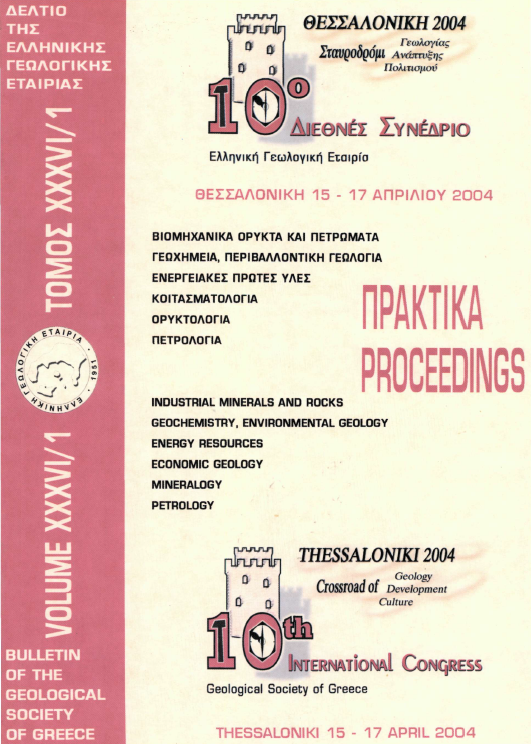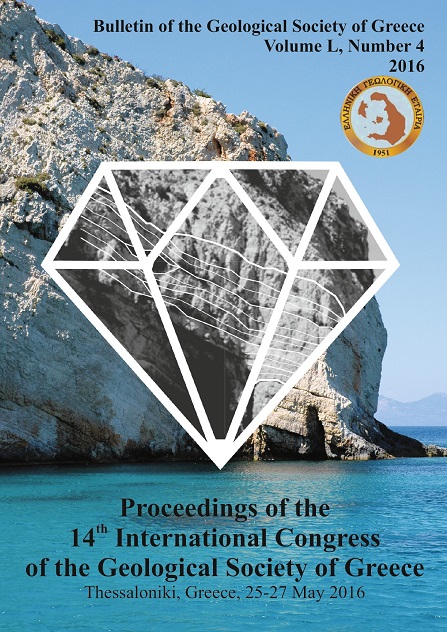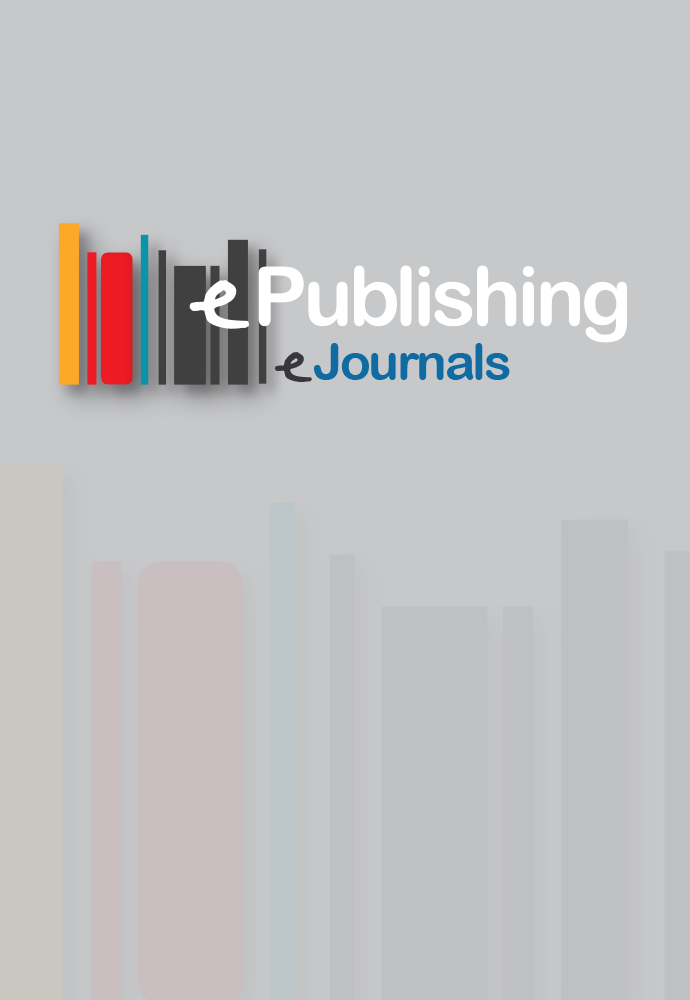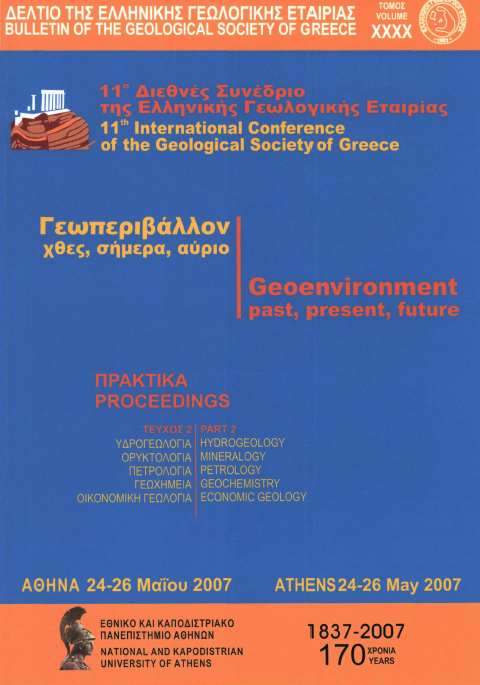COMPARATIVE GEOCHEMICAL STUDY OF THE TRIASSIC TRACHYANDESITES OF GLYKOMILIA AND ALKALI BASALTS FROM THE KOZIAKAS OPHIOLITE MELANGE (W. THESSALY): IMPLICATIONS FOR THEIR ORIGIN
Abstract
The Triassic Glykomilia trachyandesites of the Koziakas mountain range (western Thessaly) are parts of the oldest volcanic series in continental central Greece. Rock fragments and blocks of pillowed alkali basalts, which are dispersed into the Koziakas ophiolite mélange, display similar subparallel chondrite-norme'ized trace and rare earth element patterns to the trachyandesites, suggesting cogenetic origin. However, the Glykomilia trachyandesites are more differentiated than the Koziakas alkali basalts, which display a different petrogenetic evolution from the basalts occurring in the Koziakas Ophiolite Unit. REE patterns and discrimination diagram plots reveal significant similarities to Triassic volcanic rocks from the Hellenides, suggesting also a VAB signature for the Glykomilia trachyandesites and a WPB affinity for the alkali basalts. Partial melting of a LILEenriched hydrous mantle under spreading conditions is suggested to give rise to Glykomilia trachyandesites. This partial melting episode was probably induced by the uplift of an OIB-type mantle plume, which subsequently produced the WPB alkali basalts of the Koziakas ophiolite mélange. The close association cf both the Glykomilia trachyandesites and the Koziakas alkali basalts with cherts lead to the hypothesis of eruption in a deep rift basin.
Article Details
- How to Cite
-
Pomonis, P., Tsikouras, V., & Hatzipanagiotou, K. (2004). COMPARATIVE GEOCHEMICAL STUDY OF THE TRIASSIC TRACHYANDESITES OF GLYKOMILIA AND ALKALI BASALTS FROM THE KOZIAKAS OPHIOLITE MELANGE (W. THESSALY): IMPLICATIONS FOR THEIR ORIGIN. Bulletin of the Geological Society of Greece, 36(1), 587–596. https://doi.org/10.12681/bgsg.16756
- Section
- Petrology

This work is licensed under a Creative Commons Attribution-NonCommercial 4.0 International License.
Authors who publish with this journal agree to the following terms:
Authors retain copyright and grant the journal right of first publication with the work simultaneously licensed under a Creative Commons Attribution Non-Commercial License that allows others to share the work with an acknowledgement of the work's authorship and initial publication in this journal.
Authors are able to enter into separate, additional contractual arrangements for the non-exclusive distribution of the journal's published version of the work (e.g. post it to an institutional repository or publish it in a book), with an acknowledgement of its initial publication in this journal. Authors are permitted and encouraged to post their work online (preferably in institutional repositories or on their website) prior to and during the submission process, as it can lead to productive exchanges, as well as earlier and greater citation of published work.






